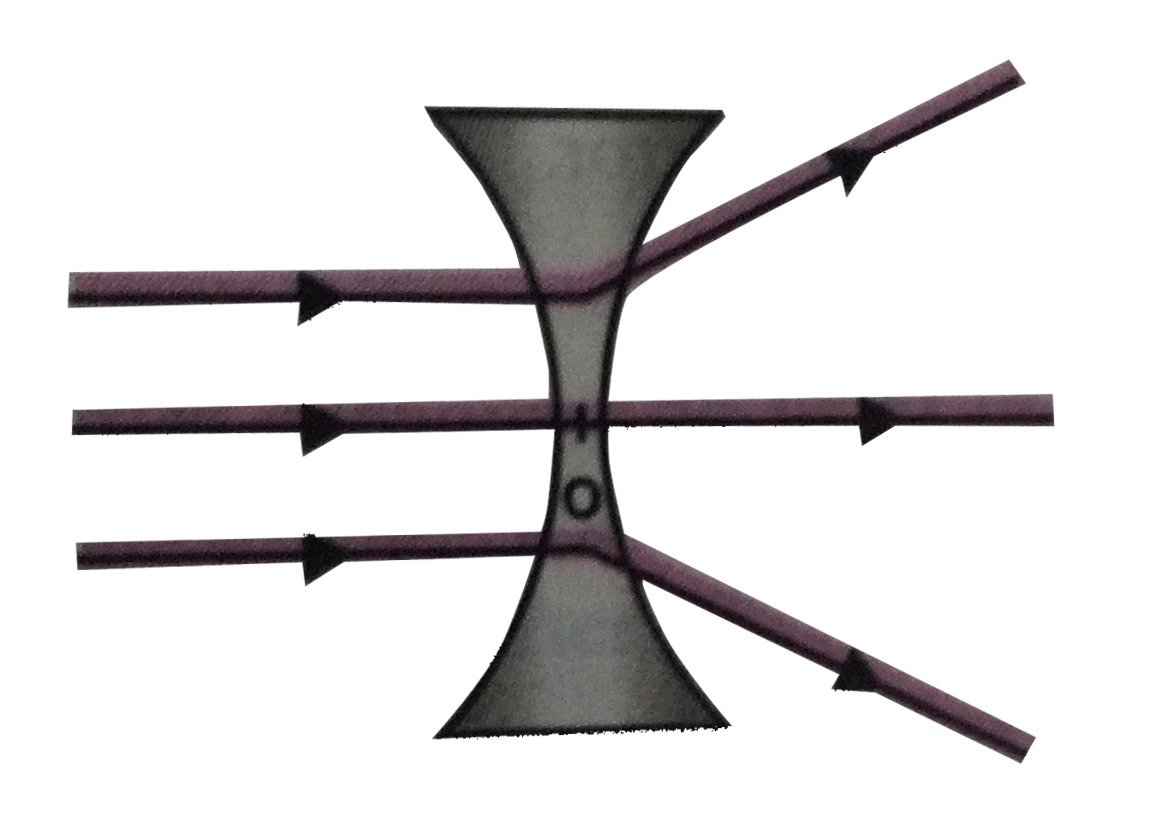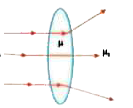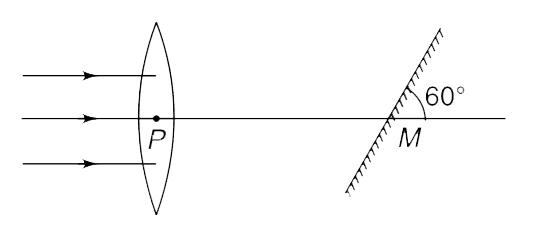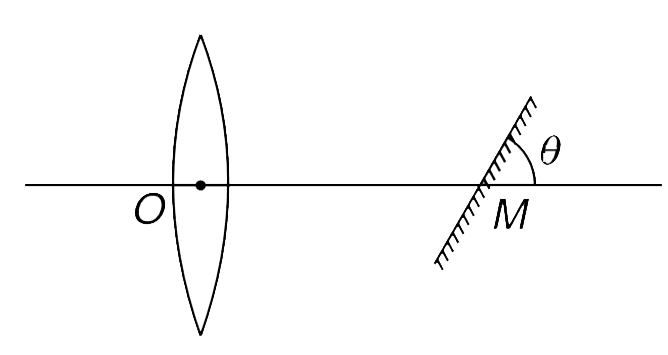A parallel beam of light passes through a lens held at O as shown in Fig. What is the nature of the lens?

The lens at O must be concave as the beam is diverging on passing through the lens.
Topper's Solved these Questions
- REFLECTION AND REFRACTIONBOOK - PRADEEPCHAPTER - REFLECTION AND REFRACTIONEXERCISE - Short Q/A (3 marks)
35 Videos
- REFLECTION AND REFRACTIONBOOK - PRADEEPCHAPTER - REFLECTION AND REFRACTIONEXERCISE - long Q/A
7 Videos
- REFLECTION AND REFRACTIONBOOK - PRADEEPCHAPTER - REFLECTION AND REFRACTIONEXERCISE - long answer question
9 Videos
- MAGNETIC EFFECTS OF ELECTRIC CURRENTBOOK - PRADEEPCHAPTER - MAGNETIC EFFECTS OF ELECTRIC CURRENTEXERCISE - Mock Test
21 Videos
- SOURCES OF ENERGYBOOK - PRADEEPCHAPTER - SOURCES OF ENERGYEXERCISE - Mock Test
20 Videos
Similar Questions
Things always look small on viewing through a lens. What is the nature of the lens?
View SolutionA convex lens of focal length 1 meter and a concave lens fo focal length 0.25 meter and kept 0.75 meter apart. A parallel beam of light first passes through the ocnvex lens, then through the concave lens and comes to a focus 0.5m away from the concave lens.
View Solution
Knowledge Check
The power of a lens is -4.0 D. what is the nature of the lens?
APlaneBConcaveCConvexDPlano convexIf parallel beam of light falls on a convex lens. The path of the rays is shown in fig. It follows that
 Aμ1>μ>μ2Bμ1<μ<μ2Cμ1=μ<μ2Dμ1=μ>μ2
Aμ1>μ>μ2Bμ1<μ<μ2Cμ1=μ<μ2Dμ1=μ>μ2If a convergent beam of light passes through a diverging lens, the result
AMay be a convergent beamBMay be a divergent beamCMay be a parallel beamDMust be a parallel beam
A convex lens of focal length 1 meter and a concave lens of focal length 0.25 meter are kept 0.75 meter apart. A parallel beam of light first passes throught the convex lens, then through the concave lens and comes to a focus 0.5 m away from the the concave lens.
View SolutionA horizontal parallel beam of light passes through a vertical convex lens of focal length f. The optical centre of the lens is P. A small plane mirror is placed at point M inclined at 60° to the axis of the lens. Distance PM=f/2. The mirror reflects the light passing through the lens and forms an image at point I. Find distance PI.

View SolutionA parallel beam of light passes parallel to the principal axis and falls on one face of a thin convex lens offocal length f and after two internal reflections from the second face forms a real image. The distance of image from lens if the reflactive index of material of lens is 1.5 :
View SolutionA horizontal parallel beam of light passes though a vertical convex lens of focal length 40 cm. Behind the lens there is a plane mirror making an angle θ with the principal axis of the lens. The mirror intersects the principal axis at M. Distance between the optical centre of the lens and point M is OM=20cm. The light beam reflected by the mirror converges at a point P. Distance OP is 20 cm. Find θ.

View SolutionIf a convergent beam of light passes through a diverging lens, the result
View Solution
